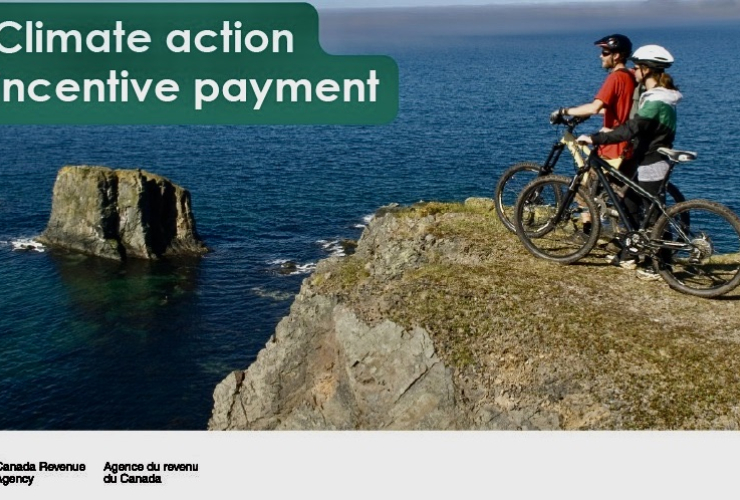Support journalism that lights the way through the climate crisis
For Angel Ransom, stacks of paperwork, short timelines, overstretched staff and a gauntlet of project proposals lead to consultation fatigue.
These challenges can leave Indigenous nations overwhelmed and unequipped “equal partners” during the impact and environmental assessment process for development projects.
As a result, the federal government is recognizing Indigenous leaders’ call for more jurisdiction over major developments by funding better Indigenous participation in Crown consultation processes.
The Crown is constitutionally required to consult Indigenous Peoples before approving any development on their homelands by industries like mining, construction and forestry. The federal government offers up to $11 million in funding through its Indigenous Capacity Support Program to help First Nations, Métis and Inuit leadership build the capacity to sufficiently consider projects and respond to impact assessments on their territories.
Now, the Impact Assessment Agency is opening a funding stream for “strategic opportunities” to help Indigenous nations prepare to deal with projects in the future.
Money is also available for “program partners” to help Indigenous organizations, like tribal councils, develop the ability to produce technical maps and studies of their homelands. There are also funding streams to organize events for sharing knowledge, expertise and best practices around consultation.
The program addresses a key gap preventing some Indigenous groups from fully engaging in consultation, said Ransom, senior vice-president of environmental services for the First Nations Major Projects Coalition, an organization founded to help First Nations in B.C. respond to development projects.
“There's never been core funding for natural resource management at the community level, yet we're expected to engage and consult on these processes. That's backwards,” she said. “There are projects happening, and you want our time and energy and information and consent but you're not going to fund that. That is a system of failure.”
Section 35 of the Constitution Act requires governments to consult Indigenous Peoples before development on their traditional lands. That consultation process often asks for Indigenous nations' perspectives submitted through paperwork, which some are not equipped to handle.
Last year, several First Nations wrote to the Impact Assessment Agency of Canada to say they could not properly participate in consultation on a road to the Ring of Fire mining region in northern Ontario. Last month, the Chiefs of Ontario called for a moratorium on mining development after the number of mining claims on their territory skyrocketed.
Robert-Falcon Ouellette, a University of Ottawa Indigenous political science researcher, said the funding could mean nations can pay for the work of consultation.
“A lot of First Nation communities don't have the financial resources to participate, but everyone wants to talk to them, consult with them,” Ouellette said. “Often, [consultation] turns into volunteer work, which makes it hard for people who might have the expertise to fully participate in impact assessments, and [make] sure that things are done the right way.”
Ian Ketcheson, vice-president of the Impact Assessment Agency of Canada’s Indigenous relations sector, said this work comes with a deadline. During assessments, Indigenous communities are often given 30-day deadlines to respond to updates from the Crown or developers.
“Often, out of necessity, this pushes nations into engaging outside consultants and lawyers because of the time pressure that they're under, and they don't have the luxury of spending a lot of time to build up the capacity of their own community members,” Ketcheson said. “But we hear consistently from the nations we work with, and the consultants and advisers, that this is work that's best done by the nation themselves."
The support comes as jurisdiction over major development projects shifts away from Ottawa and toward the provinces. The 2019 Impact Assessment Act created the Impact Assessment Agency to evaluate the environmental effects of projects like Highway 413 and the Ring of Fire mining region in northern Ontario. Last year, a Supreme Court of Canada ruling found the law was “largely unconstitutional.”
While the new funding program is a step toward addressing a gap in consultation, Carleton University Indigenous governance professor Gabriel Maracle said more needs to be done.
“It would be great to see this program obtain evergreen funding,” Maracle said. “Oftentimes these initiatives will have a limited funding window, and with changes in government mandates, programs get scrapped. Ensuring that there are funds as this program changes and evolves, ensuring that it has some longevity, is incredibly important.”

Ouellette said when Indigenous communities are better equipped to work with developers, more projects move ahead with proper consultation. “This is a strong investment from the federal government and, frankly, it’s very good for business.”
Having Indigenous nations as partners when moving forward with projects on Indigenous territories could help developers manoeuvre through red tape more efficiently, Ransom added. She pointed to community opposition leading to project breakdown or delays as the risks of not obtaining consent and consultation from nations. “We know our lands best. We know where a project should or shouldn’t go,” she said.
“If we're not at the table, if we're not getting all the information we need, how are we supposed to give consent? And if you don't have consent, you're going to have pushback,” Ransom added.
For Ketcheson, in his time at the impact assessment agency, he’s seen projects develop more sustainably and intelligently through Indigenous-led assessments.
Projects have even been redesigned to reflect “high-quality” input from Indigenous nations using their knowledge and better data, resulting in healthier territories and harvest areas, Ketcheson said.
“It's really just about kind of looking at it through a new lens,” he added.
Matteo Cimellaro and Isaac Phan Nay / Canada’s National Observer / Local Journalism Initiative







Comments